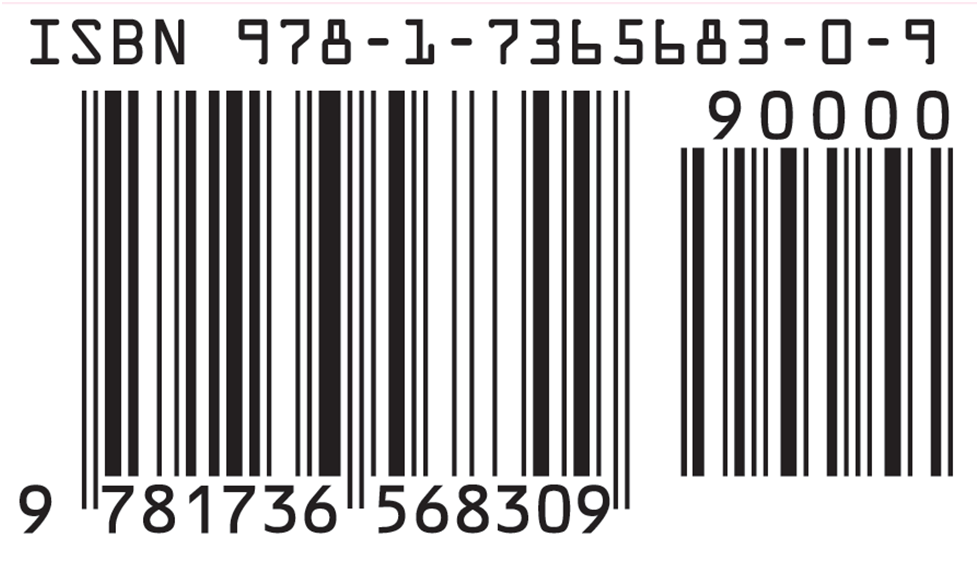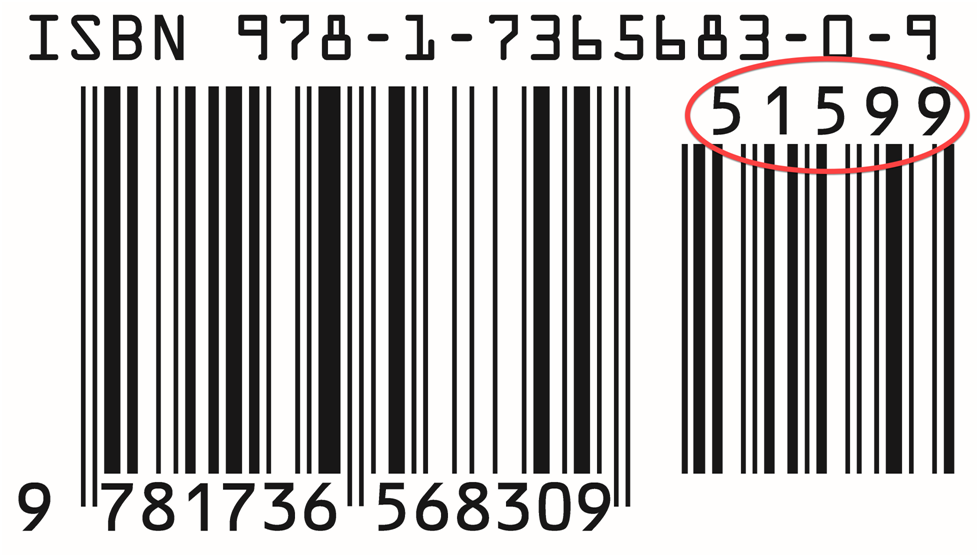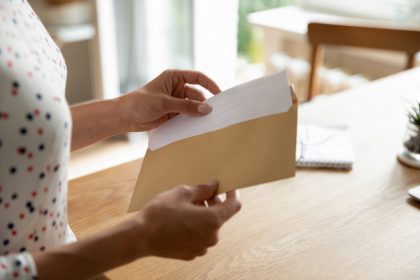
Here at New Shelves we make it our business to interact with the writing and publishing communities. We’re members of ALLi, IBPA, Authors Guild, Reedsy and quite a few Facebook groups for writing, publishing and book promotion.
Why? Because it’s important to us that we actively interact with our community. To work with authors on the front lines of publishing, to offer free advice when we are able, to stay on top of industry changes and to learn right alongside of – and from – all of you.
Once in a while, though, we see bad advice given – mostly in Facebook groups where sometimes people's best intentions override their knowledge of the industry – and it makes us want to holler from the rooftops.
Topping the list of bad advice is “You don’t need a price specific barcode for your book.”
Often times the reasons cited are:
- You can’t change the price of your book if you have a price specific barcode.
False. You are able to change out your price on a price specific barcode at any time with Print on Demand.
- You have to pay for a price specific barcode and it’s not worth it.
Also false. You can easily create your own price specific barcode as shown in this New Shelves YouTube tutorial: https://www.youtube.com/watch?v=TwsHBeEkZJQ
The truth is, if you have any hope of taking your book beyond the Amazon marketing place you NEED a price specific barcode.
Here is a pic of a barcode without a price embedded in the barcode:

Book buyers and bookstores who see this barcode will often instantly put it in the “no” pile because it does not have a price embedded in the bar code.
What does a barcode with a price embedded in the code look like?
We’re glad you asked!

See the 51599 number over the shorter bars? That means that the book is $15.99. The ISBN-13 barcode (also called an EIN) should include a price in it. It will start with a “5” and be followed by the remaining numbers which will make up the price.
A price specific barcode is NOT optional.
While some in the self-publishing industry will tout a price specific barcode as optional, we’re here to tell you the opposite. A price specific barcode is NOT optional… not if you want to emulate a traditionally published book and get your title into bookstores, airports and big box stores.
Ingram, Baker and Taylor, and Barnes and Noble will ask your sales rep if your book has a price embedded barcode. If the answer is no, the chances are that the book buyer will also say “no”… to your book.
Why would you shortchange yourself like that?
Do yourself a favor: Go get a price specific barcode for your book. It is a requirement to maximize the sale potential of your book.









I actually agree with you, except for the fact that bookstores, airports, and big box stores are the least profitable channels for an author-publisher.
And unless the author is working with a distribution company, they will not have a “sales rep.”
So, yes, I am one of those people that recommends that authors not bother embedding the price in the barcode. That way, you can change the price on Amazon (or elsewhere) whenever you like and not worry about having to update the cover each time.
Hi Ruth.
While Amazon and online sales tend to be the main source of sales and income for most self-published authors, physical stores and big box stores are often an overlooked avenue of income in the indie world. And if we can make a profit in more places than one, why wouldn’t we? There is also a sense of social proof and notoriety in having your book sold in physical stores that many authors crave. The best way to make that happen is to set a book up for success (with a full trade discount and a priced barcode) and pitch them to buyers regularly. That is why New Shelves teaches and encourages authors — both traditionally and self-published — to become their own sales rep. This may not be the chosen path for every author… but that’s the beauty of self-publishing and being able to tailor the publishing process to meet specific goals.
Thanks for sharing your perspective and giving readers another angle to think on!
Thankfully, I learned this early on and had my designer create a price specific barcode for my all my books.
I think the tricky part for new authors or existing publishers is the work that happens later. Say for instance a POD printer increase their print pricing, now the author/publisher has to increase their price, which means they need to update the barcode, and so on.
If I’m a newer author and just paid a contractor to create my cover, now I have to figure out how to change the price on my cover or hire that cover designer again to update the barcode.
You made this seem simple, but for some, including myself, its another item on my TO-DO list that I have to figure out.
Lucky for all those reading this, know you make this simple.
Cheers!
David
Is this a US retail thing? I’ve just wandered round the house checking everything with a barcode that I’ve bought in the last six months and only one book has it – an American import.
What starts in the US generally spreads, but if the UK publishers releasing books in March don’t have them, I don’t think UK people should worry too much. (yet)
Yes, Jemima. You are spot on. A price specific barcode is a MUST in the US and also Canada for physical retail markets but more of an option in the UK… for now. Do keep in mind that if you wish to sell your books into retail stores in the US or Canada it doesn’t matter where the book is published – a price specific barcode will be expected.
Thank you for the very useful information! Till now i have not realized the importance of the barcode, also for changing the marketplace. Amazon is making it so easy for writers, staying forever there. 😉 Michael
[…] quality design. This includes a price specific barcode – […]
[…] know retail stores require a priced barcode, but what about libraries? The short answer is “no” but you can get the full scoop at 33:59 on […]
But why? Why is it a “must”? Why would any retailer reject a book simply because the price isn’t embedded in the ISBN barcode, especially when most book retailers just cover up the ISBN with their own barcode sticker?
Frustrating, right? We don’t make the rules… we just share them with indie publishers and authors to even the playing field.
But a few reasons I’ve heard from retail buyers:
1. The priced barcode makes for easier entry and updating into the store’s point of sale system.
2. Many retailers do actually use the priced barcode.
3. A priced barcode is a sign that the book has been professionally published to trade standards.
4. It’s a growing trend for authors to offer books at one (lower) retail price on Amazon and hike up the retail price on Ingram to make up for the discount offered to bookstores. (Which completely defeats the purpose of a trade discount.) Many retailers feel a price embedded barcode indicates that the book is being offered at the same retail price to every outlet.
5. And, finally, my personal favorite, “It’s the way it has always been.”
What about Aussi? Is a bar code necessary? Also, how do you price your book and what price aspects should you consider?
Also, is the price fixed? Do retail stores increase the scanned price for their profit?
Yes, many stores (especially chains) worldwide require a price specific barcode. The price in a barcode is the MSRP (manufacturer’s suggested retail price). A store can charge more or, more likely, offer a discount to charge less but the sales from the manufacturer, royalties, etc. are based on the MSRP. As for pricing your book, you should consider your comps — genre, page count, audience, etc. — as well as the cost for production and your profit.
This is a great blog and i want to visit this every day of the week “
GTU
I’m offering in US, Canada, UK, Australia. One person at Ingram tells me no price in barcode, another says yes. ??
If your goal is to get your book into physical retail locations it’s best practice (and often required) to list your price in the barcode. As for which currency to list, I recommend whichever market is your target or largest.
Is it possible to use Amazon’s own barcode for online sales, and a paid barcode for Ingram Sparks? I already have my own ISBN’s. Also, should I be shouting at my cover designer for saying nothing about leaving a space for the barcode?